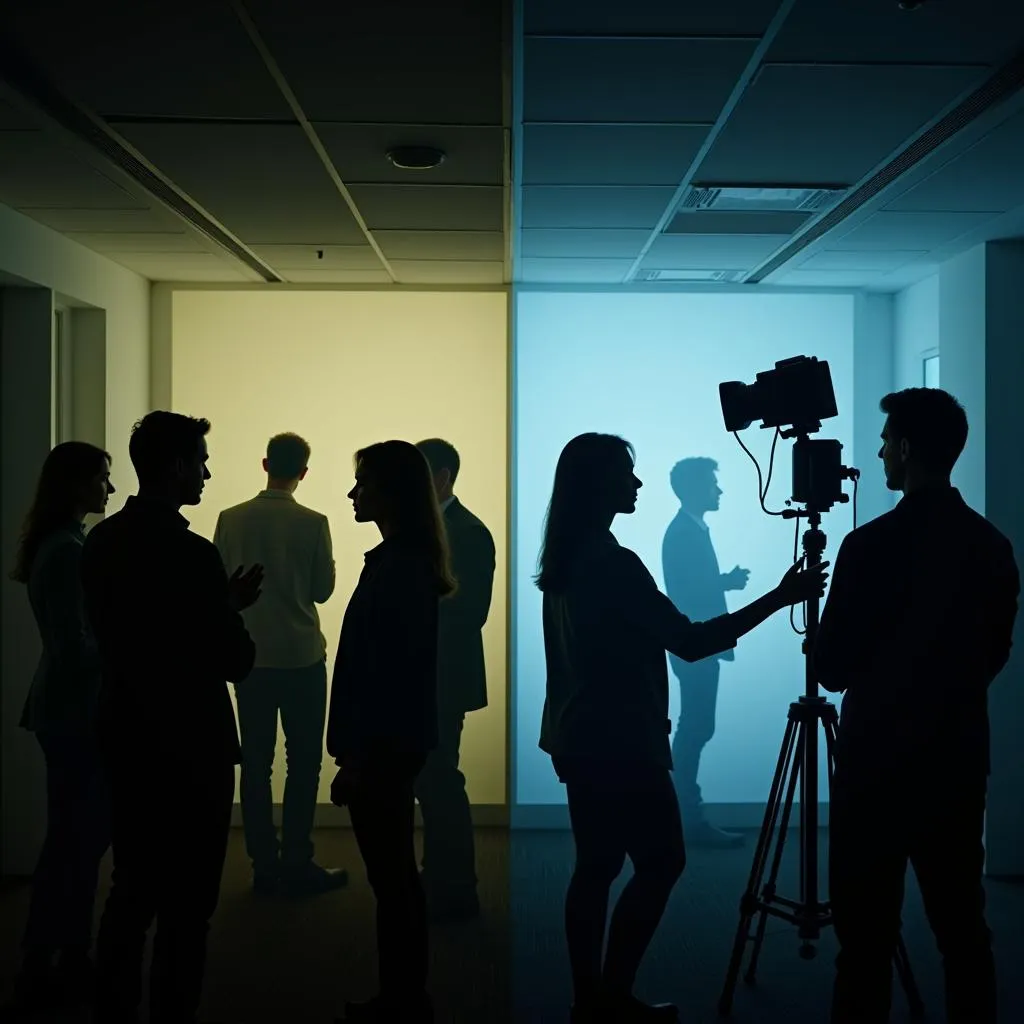The world of paranormal research is shrouded in mystery, often blending anecdotal experiences with scientific rigor. At its core lies the pursuit of evidence, but the question remains: how do we gather reliable information when dealing with the unknown? This brings us to the crux of our discussion – informal vs. formal research in paranormal investigation. Both methods offer unique approaches to understanding unexplained phenomena, each with its own strengths and limitations.
Unveiling the Shadows: Informal Research in the Paranormal
Informal research represents the initial foray into the unknown. It often involves personal experiences, eyewitness accounts, and preliminary investigations. This approach, while less structured, is crucial in identifying potential paranormal hotspots and formulating preliminary hypotheses.
Imagine a haunted house shrouded in local legend. Informal research would involve:
- Gathering Anecdotal Evidence: Interviewing witnesses, collecting local stories, and documenting personal experiences within the house.
- Preliminary Observation: Spending time in the location, noting unusual sounds, temperature changes, or unexplained occurrences.
- Reviewing Existing Data: Examining historical records, photographs, and previous investigations of the property.
This form of research acts as the first layer of investigation, providing the foundation for more formal inquiries.
Illuminating the Unknown: Formal Research in Paranormal Investigation
Formal research in the paranormal realm seeks to apply scientific methodologies to validate claims and gather objective data. While the subject matter often defies conventional scientific explanation, the principles of observation, documentation, and analysis remain paramount.
Let’s revisit our haunted house example. Formal research would involve:
- Controlled Experiments: Using EMF readers, thermal cameras, and other scientific instruments to detect and measure potential anomalies.
- EVP Recordings: Employing audio recording equipment to capture electronic voice phenomena, attempting to establish communication with any potential entities.
- Photographic and Video Documentation: Utilizing high-quality cameras and video recorders to document any visual evidence of paranormal activity.
 Formal Paranormal Research Methods
Formal Paranormal Research Methods
The Symbiotic Relationship: Where Informal and Formal Research Intersect
While distinct in their approaches, informal and formal research methodologies are not mutually exclusive. In fact, they often work in tandem to provide a more comprehensive understanding of paranormal phenomena.
Informal research often provides the initial spark, identifying areas where formal investigation might yield valuable insights. Conversely, formal research can either corroborate or debunk claims initially arising from informal investigations.
Consider the case of a supposed haunted artifact. Informal research might involve tracing its history and collecting stories associated with its alleged paranormal activity. This information can then guide formal researchers in designing experiments or observations to test for unusual electromagnetic fields, temperature fluctuations, or other measurable anomalies associated with the object.
Bridging the Gap: The Importance of Collaboration
The debate between informal and formal research methods often overlooks a crucial aspect – collaboration. Paranormal research thrives when individuals with diverse backgrounds and expertise unite their efforts.
Experienced paranormal investigators often possess a wealth of anecdotal knowledge and investigative techniques honed through years of fieldwork. Scientists, on the other hand, bring their expertise in experimental design, data analysis, and critical thinking. By fostering collaboration between these groups, the paranormal field can move towards a more comprehensive and nuanced understanding of unexplained phenomena.
Seeking Answers in the Darkness: The Ongoing Quest
The exploration of the paranormal realm is a continuous journey, one that requires an open mind, a healthy dose of skepticism, and a willingness to explore the unknown with both curiosity and rigor. Whether through informal exploration or formal scientific inquiry, the pursuit of understanding the unexplained continues to captivate and challenge our understanding of the world around us.
Frequently Asked Questions About Informal vs. Formal Research
1. Is formal research always better than informal research in the paranormal field?
Not necessarily. While formal research offers a more structured and scientific approach, informal research is often crucial in identifying potential paranormal hotspots and generating initial hypotheses for further investigation.
2. What are some examples of scientific equipment used in formal paranormal research?
Common tools include EMF readers, thermal cameras, full-spectrum cameras, EVP recorders, and motion sensors.
3. Can I conduct paranormal research on my own?
Yes, but it’s important to prioritize safety and ethical considerations. Always research locations thoroughly, obtain necessary permissions, and avoid investigating alone.
4. How can I contribute to paranormal research even if I’m not a scientist?
Sharing your experiences, documenting local legends, and supporting ethical paranormal investigation groups can be valuable contributions.
5. Where can I learn more about formal and informal research methodologies?
Numerous books, online resources, and paranormal research organizations offer information on investigative techniques and research methodologies.
Need Help with Your Paranormal Research?
Our team at Paranormal Research is dedicated to exploring the unexplained. Contact us at 0904826292, email us at research@gmail.com, or visit our office at No. 31, Alley 142/7, P. Phú Viên, Bồ Đề, Long Biên, Hà Nội, Việt Nam. We offer 24/7 support for all your paranormal inquiries.
Explore further by reading our articles on [EVP analysis techniques], [haunted object identification], and [setting up controlled paranormal experiments].